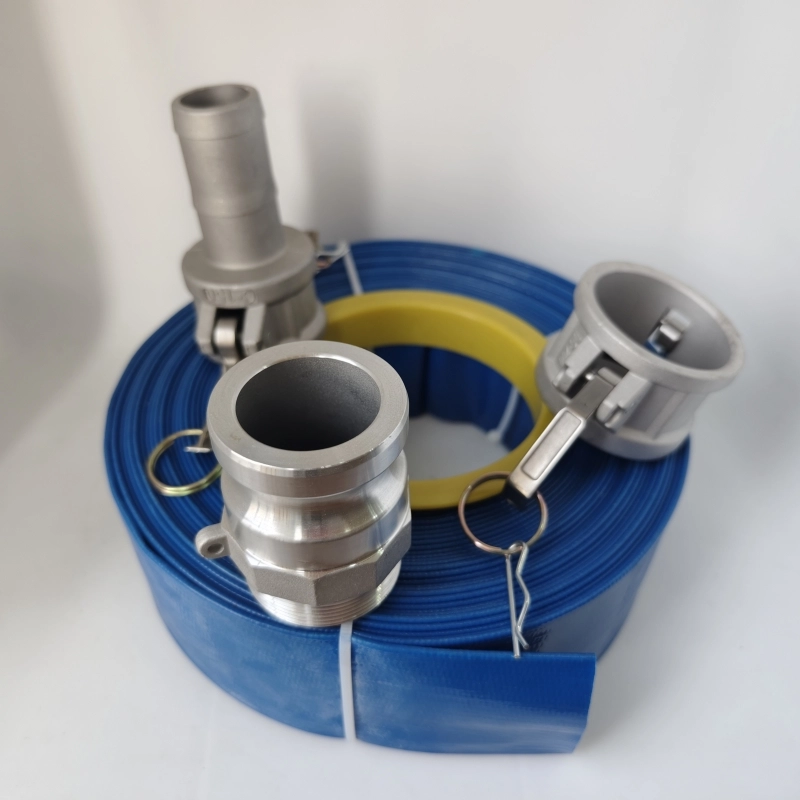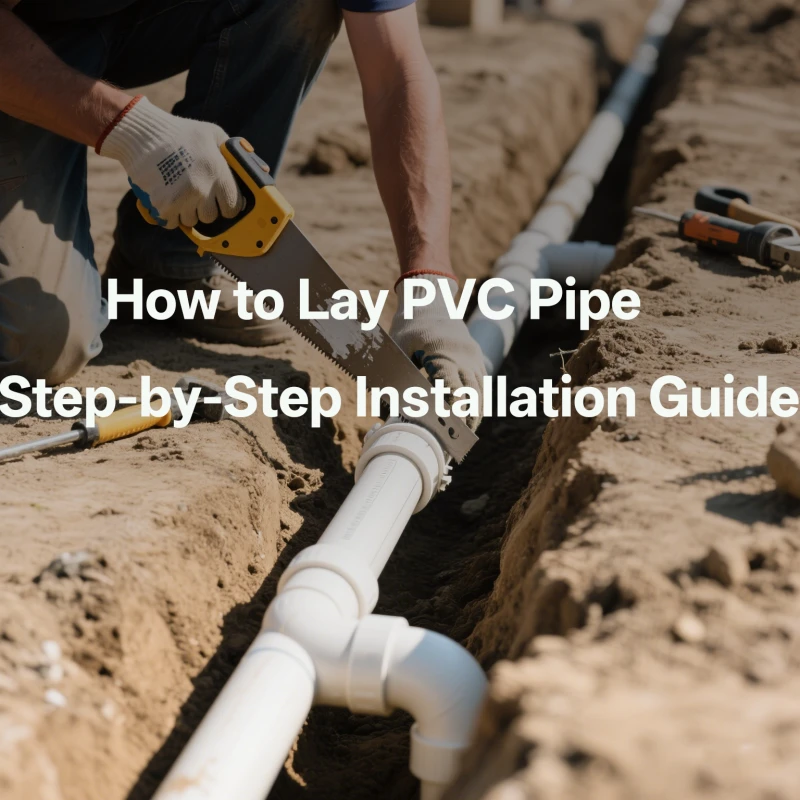PVC Layflat Hose Vs HDPE Pipe
This paper provides an in-depth comparison of the performance differences and application choices between PVC Layflat Hose and HDPE (High-Density Polyethylene) pipes in agricultural irrigation, industrial water conveyance, and mine drainage.
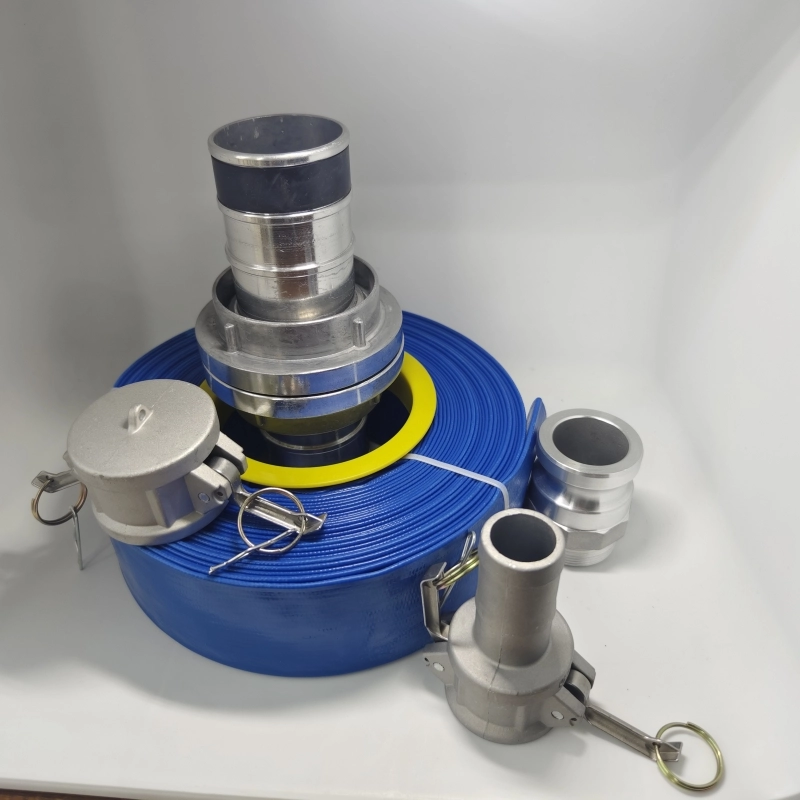
By systematically analyzing measured data on six key dimensions—compressive strength, weather resistance, flexibility, service life, installation convenience, and cost-effectiveness—we reveal the respective advantages and limitations of both pipe types. The research findings indicate that PVC Layflat Hose excels in temporary and mobile water supply scenarios, while HDPE pipes are more suitable for permanent, high-pressure fixed installations. Finally, this paper proposes a decision-making matrix for selection based on different working conditions, offering engineers and technicians a scientific methodology for making choices.
Keywords: PVC Layflat Hose, HDPE Pipe, Irrigation System, Pipe Selection, Water Conveyance Equipment
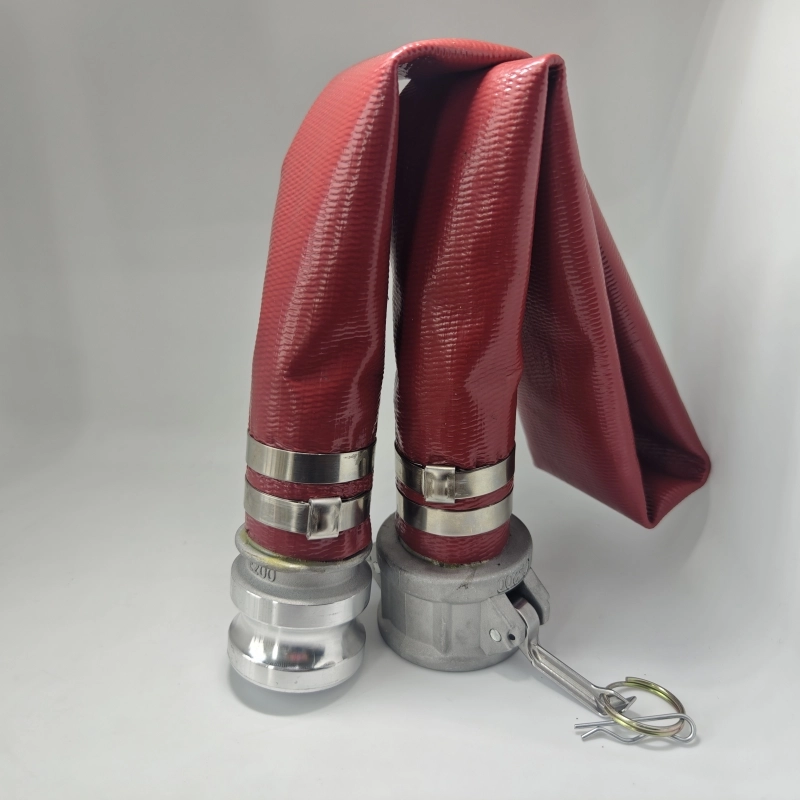
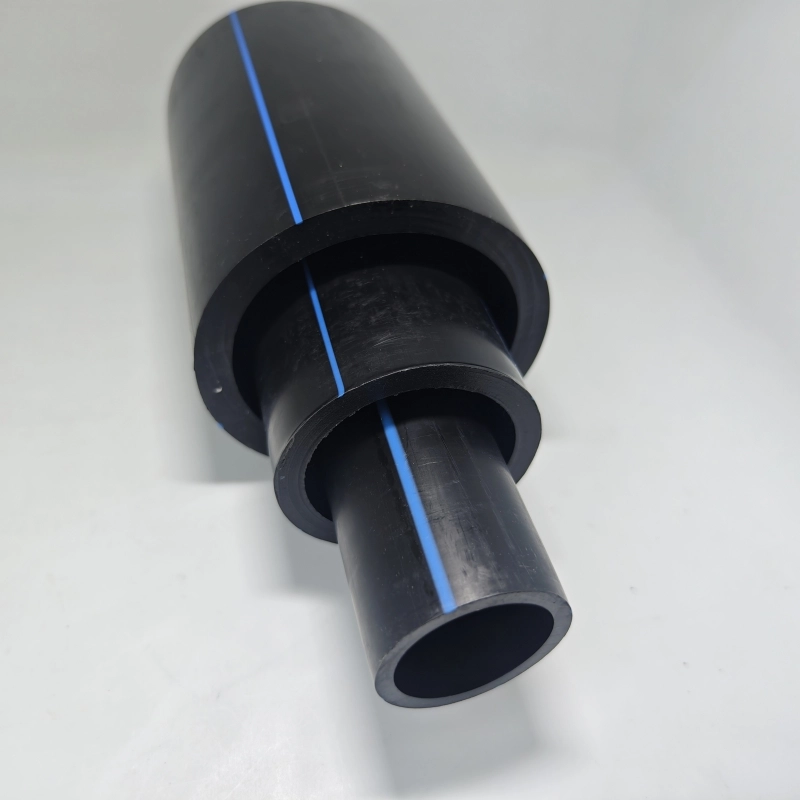
Introduction
In modern agricultural irrigation, industrial water supply, and mine drainage, PVC Layflat Hose and HDPE pipes are two mainstream water conveyance solutions, with ongoing debates over their application choices. According to statistics, PVC Layflat Hose accounts for about 38% of the global irrigation pipe market, while HDPE pipes occupy 45%, with the remainder comprising other materials. This near-equal market share reflects the irreplaceable advantages of both products. However, many "pipe selection mistakes" in engineering practice often stem from insufficient understanding of their fundamental differences. For example, a large farm incorrectly chose HDPE pipes for its center pivot irrigation system, resulting in insufficient flexibility and a 30% increase in installation costs. Conversely, a mine drainage project mistakenly used PVC Layflat Hose, leading to frequent leaks due to inadequate resistance to puncture by gravel.
Based on materials science and fluid mechanics principles, combined with the latest experimental data and engineering cases domestically and internationally, this paper establishes a comprehensive performance comparison framework. Unlike common simple parameter listings, we will focus on revealing the true performance differences of the two pipe types under complex conditions such as temperature changes, dynamic pressures, and terrain adaptability. We will also pay special attention to the performance improvements brought about by technological innovations in both materials after 2020 (such as UV-resistant formulations for PVC and nano-enhanced technologies for HDPE). Through this study, engineering decision-makers will gain in-depth knowledge beyond product specifications, enabling them to make optimal pipe selections for specific projects.
Fundamental Differences in Material Properties and Structural Design
1.1 Molecular Structure and Material Composition
PVC Layflat Hose uses plasticized polyvinyl chloride resin as the main raw material, achieving flexibility by adding phthalate plasticizers (accounting for approximately 25-35%). This chemical composition results in a non-crystalline structure at the microscopic level, with weak intermolecular forces. In contrast, HDPE pipes are polymerized from ethylene monomers, with a crystallinity of 70-90% and a dense molecular arrangement (density of 0.941-0.965 g/cm³). This fundamental difference directly leads to significantly higher tensile strength (20-32 MPa) for HDPE pipes compared to PVC hoses (12-18 MPa), but relatively lower elongation at break (500-700% for HDPE vs. 200-400% for PVC).
1.2 Physical Structure Comparison
The unique flat design of the PVC Layflat Hose is its core feature. It expands into a cylindrical shape and can be folded to 1/5 of its original volume when empty, thanks to a special "memory" polymer formulation. The pipe wall typically adopts a three-layer co-extrusion process: an inner layer for smooth flow reduction, a middle layer with braided reinforcement (polyester or high-strength fibers), and an outer layer with UV resistance treatment. In contrast, HDPE pipes have a rigid circular tube structure, with standard SDR (Standard Dimension Ratio) series controlling pressure-bearing capacity through wall thickness. The latest development of corrugated pipe design enhances radial flexibility while maintaining axial rigidity.
1.3 Production Process Differences
PVC Layflat Hose is produced through a calendering process, where PVC is plasticized at 160-180°C, shaped through a mold, and then cooled and wound up. HDPE pipes are extruded, with the melt temperature reaching 200-220°C before being extruded through a circular die and sized using vacuum calibration technology to ensure dimensional accuracy. This process difference results in better wall thickness uniformity (±0.1 mm) for HDPE pipes compared to PVC hoses (±0.3 mm), but PVC hoses can achieve more complex inner lining designs.
Measured Comparison of Key Performance Parameters
2.1 Mechanical Performance Comparison (Based on ISO 9001 Testing Standards)
For burst pressure, a Φ75mm PVC Layflat Hose typically has a value of 0.6-1.2 MPa, while an HDPE pipe of the same diameter (SDR11) can reach 1.6-2.5 MPa. However, dynamic fatigue tests show that under 0-0.8 MPa pulsating pressure (1 Hz frequency), the cyclic life of PVC hoses (about 500,000 cycles) is superior to that of HDPE pipes (about 300,000 cycles), benefiting from the stress dispersion effect of their fiber reinforcement layer. In puncture resistance tests, HDPE pipes have a puncture energy of 18-25 J according to ASTM D4883, significantly higher than the 8-12 J of PVC hoses, making them more suitable for gravelly geological environments.
2.2 Fluid Characteristic Performance
The inner surface roughness of PVC Layflat Hose (Ra=0.8-1.2 μm) is lower than that of HDPE pipes (Ra=1.5-2.0 μm), reducing head loss by about 15% at the same flow rate. However, HDPE pipes have better long-term flow resistance stability. After 5,000 hours of water flow testing, their Hazen-Williams coefficient remains at 140-145, while PVC hoses increase to 150-155 due to microscopic plasticizer exudation. Under negative pressure suction conditions, PVC hoses exhibit significant lumen collapse tendencies, with a cross-sectional shrinkage rate of 30% when the vacuum exceeds -0.05 MPa, while HDPE pipes maintain their complete circular shape even at -0.1 MPa.
2.3 Environmental Adaptability Differences
Ultraviolet aging tests (ISO 4892-3) show that unstabilized PVC hoses experience a 40% decrease in tensile strength after 3,000 kJ/m² irradiation, while HDPE pipes only decrease by 15%. However, modern UV-resistant PVC formulations (with the addition of TiO2 and hindered amine light stabilizers) can control performance degradation to within 20%. In terms of low-temperature performance, PVC hoses become significantly stiffer below -5°C (bending modulus increases eightfold), while HDPE pipes maintain flexibility down to -30°C. For chemical corrosion environments, HDPE pipes exhibit better stability within a pH range of 2-12 compared to PVC, but PVC has better resistance to hydrocarbon solvents.
Practical Comparison of Economy, Installation, and Maintenance
3.1 Cost Composition Analysis
Taking the DN100 specification as an example, the initial procurement cost of PVC Layflat Hose (0.8-1.2 USD/m) is only one-third that of HDPE pipes (2.5-4 USD/m). However, a life cycle cost calculation (over a 10-year period) shows that HDPE is more advantageous in permanent installation scenarios: PVC hoses need to be replaced 2-3 times on average, and maintenance labor costs are 30% higher. In terms of transportation and storage, PVC hoses are highly space-efficient, with a single truck capable of transporting 10,000 meters (in folded state), equivalent to five times the transportation capacity of HDPE pipes.
3.2 Installation Technical Points
PVC Layflat Hose is installed using quick connectors (such as Storz fittings), with 100 meters of pipe taking only 30 minutes for two people to complete, without the need for specialized tools. HDPE pipes require hot-melt butt welding or electrofusion connections, with the same length taking 4-6 hours and specialized welding machines. However, HDPE system joints have higher reliability, with a leakage rate below 0.1% at 0.8 MPa pressure, compared to 1-3% at PVC hose clamp connections. In terms of terrain adaptability, PVC hoses can easily cross slopes below 30° and 2m-wide ditches, while HDPE pipes require the installation of elbows or elastic compensators.
3.3 Maintenance and Repair Differences
On-site repairs for PVC hoses are more convenient, with common PVC glue able to fix small holes within 10 minutes, while HDPE pipes require cutting and hot-melt insertion of repair sections. However, for mechanical damage, HDPE pipes have significantly better crack propagation resistance (passing RCP tests) than PVC, with cracks less likely to extend. In terms of cleaning and maintenance, HDPE pipes can withstand high-pressure water jets (>10 MPa) and mechanical pigging, while PVC hoses are limited to low-pressure flushing (<2 MPa).
Suggestions for Selecting Typical Application Scenarios
4.1 Agricultural Irrigation Systems
Mobile Sprinkler Irrigation: PVC layflat hose is an ideal choice. For example, circular sprinkler systems in Nebraska, USA, commonly use PVC hose, which can maintain a lifespan of over 5 years despite being moved 50-60 times annually. Its lightweight nature (0.8kg/m for a 6" hose) is particularly suitable for frequent relocations.
Fixed Drip Irrigation Main Pipelines: HDPE pipes should be selected. Data from water-saving irrigation projects in Israel shows that the leakage rate of HDPE main networks remains below 0.5% over the long term, compared to 1.2-1.8% for PVC systems.
4.2 Mine Drainage Engineering
Temporary Emergency Drainage: PVC hose offers significant advantages in rapid deployment. In an emergency drainage case at a copper mine in Chile, 2,000 meters of PVC hose were laid within 3 hours, achieving a drainage capacity of 500m³/h.
Permanent Tailings Transport: HDPE pipes must be used. Practices at iron ore mines in Australia demonstrate that HDPE pipes have a wear life 3-5 times that of PVC when transporting abrasive slurries and can withstand working pressures of 0.8-1MPa.
4.3 Industrial Water Supply Applications
Temporary Water Supply at Construction Sites: PVC hose stands out for its economy. A super-high-rise project in Shanghai used DN150 PVC hose, saving 65% on pipe costs compared to HDPE.
Process Pipelines in Chemical Plants: HDPE should be chosen. In corrosive media transport systems at Germany's BASF Group, HDPE pipes have remained leak-free for over 10 years in acidic environments at 60℃.
Decision-Making Matrix and Technological Development Trends
5.1 Multi-Dimensional Decision-Making Matrix
Based on the above analysis, we have established a quantitative selection model comprising 12 indicators:
Indicator PVC Weight HDPE Weight Applicable Condition Threshold
Working Pressure (MPa) 0-0.8 0.6-2.5 >1.2MPa, choose HDPE
Terrain Complexity High Low >3 bends/100m, choose PVC
Installation/Disassembly Frequency High Low >1 time/year, choose PVC
Puncture Resistance Requirement Low High Gravelly geology, choose HDPE
Budget Constraint ($/m) <1.5 >2.0 Low cost priority, choose PVC
Service Life Requirement (Years) 2-5 10-50 >8 years, choose HDPE
5.2 Frontier of Technological Development
PVC Material Innovation: In 2023, the Netherlands developed nano-clay-modified PVC, increasing burst pressure by 40% while maintaining flexibility; self-healing coating technology can automatically seal cracks up to 3mm.
HDPE Technological Advancements: Biaxially oriented HDPE pipes produced using molecular orientation (MOP) technology exhibit a 5-fold increase in impact strength; conductive HDPE pipes enable real-time monitoring of leaks.
5.3 Considerations for Sustainable Development
The recycling rate of PVC layflat hoses is currently only 15-20%, limited by contamination from plasticizers; whereas, HDPE pipes can exceed 70%. However, new bio-based plasticizers (such as citrate esters) may change this landscape. Carbon footprint analysis reveals that HDPE pipes have a 20% higher CO2 emission during production compared to PVC but offer greater environmental advantages in long-lifespan scenarios.
Conclusion
Through comprehensive comparison, it is clear that PVC layflat hoses and HDPE pipes are not in simple competition but rather complementary technical solutions. Engineering selection should be based on the "4M" principles: Medium characteristics, Medium conditions, Money (budget), and Management. PVC layflat hoses exhibit unparalleled advantages in low-pressure scenarios requiring frequent movement and short-term use. In contrast, HDPE pipes remain a more reliable choice for fixed installations and harsh environments demanding high pressure and long-term durability. As material modification technologies advance, the performance boundaries of these two types of pipes may become more blurred; however, their inherent characteristic differences will persist in the long term. It is recommended that users conduct field trial sections in critical projects, evaluating actual operational performance for at least 30 days, before making a final decision.
